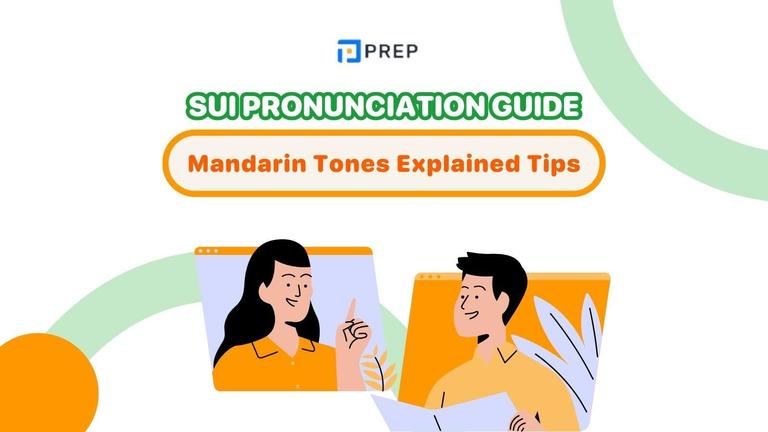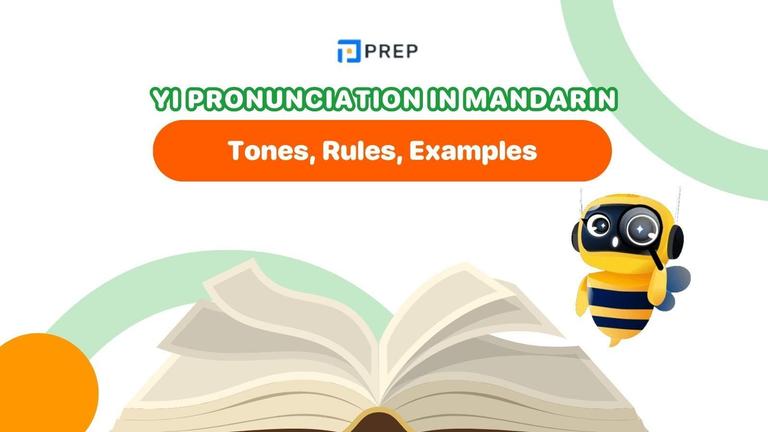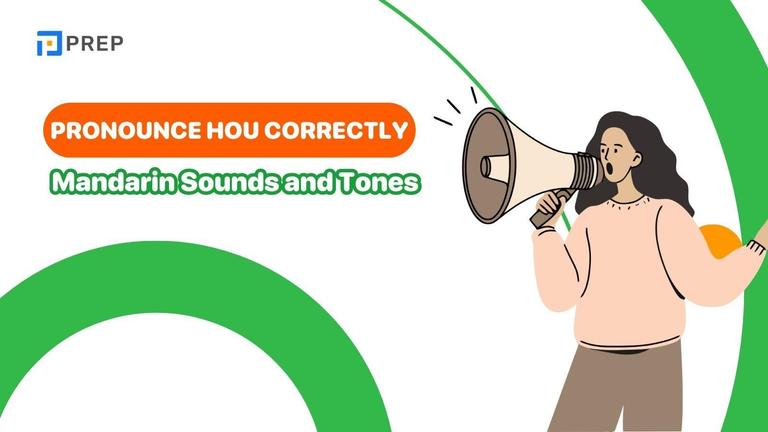Bopomofo (Zhuyin): The Complete Guide from Chart to Keyboard
Bopomofo, also known as Zhuyin (注音符號), is the foundational phonetic system used to teach Mandarin pronunciation in Taiwan. Its name comes from the first four phonetic symbols—ㄅ (bo), ㄆ (po), ㄇ (mo), and ㄈ (fo)—similar to how English begins with A-B-C. Unlike Pinyin, which relies on Latin letters, Zhuyin uses entirely unique symbols to represent Mandarin sounds directly, avoiding the ambiguity many learners face when using English-based spellings.
With 37 distinct characters and 4 tone marks, it offers a complete and highly accurate representation of Mandarin phonetics. This guide will walk you through everything you need to know—from mastering the full Bopomofo chart with pronunciation and IPA references, to understanding how the symbols function in syllables, how they compare to Pinyin, and how to activate and use the Zhuyin keyboard on any device. Whether you're just starting out or looking to strengthen your pronunciation and listening skills, this all-in-one resource is designed to build your confidence and clarity in Mandarin from the very first step.
- I. What is Bopomofo? The Foundation of Taiwanese Mandarin
- II. The Complete Interactive Bo Po Mo Fo Mandarin Chart
- III. How to Combine Bopomofo Symbols and Tones
- IV. Bopomofo vs. Pinyin: Which is Better for Your Pronunciation?
- V. Learning Zhuyin and Pinyin at The Same Time - Useful Tips
- VI. The Lasting Value of Mastering Bopomofo
I. What is Bopomofo? The Foundation of Taiwanese Mandarin
The name "bopomofo" comes from the first four Zhuyin symbols: ㄅ (bo), ㄆ (po), ㄇ (mo), ㄈ (fo). Just like “A-B-C” in English, it refers to Taiwan’s Zhuyin Fuhao (注音符號)—a phonetic alphabet used to teach Mandarin. Unlike the Latin-based Pinyin used in mainland China, Zhuyin uses distinct symbols to eliminate confusion between English letters and Mandarin pronunciation.
Zhuyin contains 37 characters and 4 tone marks, fully representing all Mandarin sounds. Though it was once used in mainland China, it was later replaced by Pinyin. Today, Chinese alphabet bo po mo fo remains official in Taiwan, Hong Kong, and Macau, and is recognized as a uniquely Chinese system designed for Mandarin phonetics.
II. The Complete Interactive Bo Po Mo Fo Mandarin Chart
As mentioned, the Zhuyin notation symbol table (Traditional Chinese alphabet) consists of 37 characters and 4 tone marks. Chinese alphabet bo po mo fo also includes complete finals - initials - tones, specifically structured into consonants, vowels, and tonal patterns that work together systematically.
1. The 21 Consonant Initials (聲母 shengmu)
Consonant initials launch every Mandarin syllable, providing the foundational sound that begins each word. Understanding these 21 symbols forms the cornerstone of the bopomofo system, giving you the tools to pronounce the beginning of any Mandarin syllable accurately.
Consonants (Initials):
|
Zhuyin Symbol |
ㄅ |
ㄆ |
ㄇ |
ㄈ |
ㄉ |
ㄊ |
ㄋ |
ㄌ |
ㄍ |
ㄎ |
ㄏ |
|
Pinyin |
b |
p |
m |
f |
d |
t |
n |
l |
g |
k |
h |
|
IPA |
b |
pʰ |
m |
f |
t |
tʰ |
n |
l |
k |
kʰ |
x |
|
Zhuyin Symbol |
ㄐ |
ㄑ |
ㄒ |
ㄓ |
ㄔ |
ㄕ |
ㄖ |
ㄗ |
ㄘ |
ㄙ |
|
Pinyin |
j |
q |
x |
zh |
ch |
sh |
r |
z |
c |
s |
|
IPA |
tɕ |
tɕʰ |
ɕ |
tʂ |
tʂʰ |
ʂ |
ʐ |
ts |
tsʰ |
s |
The consonant system organizes into distinct articulatory groups. Labial consonants (lip sounds) include ㄅ, ㄆ, ㄇ, ㄈ, formed with both lips or lip-to-teeth contact. Alveolar consonants (tongue-tip sounds) feature ㄉ, ㄊ, ㄋ, ㄌ, created with tongue against the teeth ridge. Palatal consonants (tongue-blade sounds) encompass ㄐ, ㄑ, ㄒ, produced with tongue blade against hard palate. Velar consonants (tongue-root sounds) include ㄍ, ㄎ, ㄏ, formed with tongue root against soft palate. Dental and retroflex consonants complete the system with ㄗ, ㄘ, ㄙ (tongue-tip front and back) and ㄓ, ㄔ, ㄕ, ㄖ (compound consonants).
2. The 16 Vowels, Medials & Finals (韻母/介母 yunmu/jiemu)
Finals complete the Mandarin syllable structure, working with initials to create the full range of Mandarin sounds. These 16 symbols include pure vowels, compound vowels, and nasal endings that give Mandarin its distinctive tonal quality and rhythm.
Vowels (Finals):
|
Zhuyin Symbol |
ㄧ |
ㄨ |
ㄩ |
ㄚ |
ㄛ |
ㄜ |
ㄝ |
ㄞ |
ㄟ |
ㄠ |
|
Pinyin |
i |
u |
ü |
a |
o |
e |
ê |
ai |
ei |
ao |
|
IPA |
i |
u |
y |
a |
o |
ɤ |
ɛ |
ai |
ɛi |
ɑu |
|
Zhuyin Symbol |
ㄡ |
ㄢ |
ㄣ |
ㄤ |
ㄥ |
ㄦ |
|
Pinyin |
ou |
an |
en |
ang |
eng |
er |
|
IPA |
ou |
an |
ɛn |
əŋ |
ɑŋ |
əŋɚr |
When learning the Traditional Chinese alphabet bopomofo, you need to pay careful attention to studying finals and absolutely cannot be careless with this part. The way to read finals (vowels) follows systematic patterns: Simple vowels include a, o, e, i, u, ü. Extended vowels feature ai, ei, ao, ou, ia, ie, uo, üe, iao, iou, uai, uei. Retroflex vowels center on er. Nasal vowels encompass ian, en, in, ün, uan, üan, uen, ang, eng, ing, ong, iong, uang, ueng.
Important pronunciation notes when reading the bopomofo alphabet:
-
ㄧ: Written horizontally as ─, written vertically as │
-
ㄢ: pronounced as ɛn when following ㄧ and ㄩ
-
ㄣ: pronounced as n when following ㄧ and ㄩ
-
ㄥ: pronounced as ŋ when following a vowel
-
ㄦ: used in erhua (retroflex) pronunciation
Exceptions:
|
Zhuyin Symbol |
ㄩㄥ |
ㄨㄥ |
ㄧㄥ |
ㄧㄣ |
ㄧㄝ |
ㄩㄝ |
|
Pinyin |
iong |
ong |
ing |
in |
ie |
üe |
III. How to Combine Bopomofo Symbols and Tones
Creating Mandarin syllables with bo po mo fo follows a straightforward pattern:
Initial + (Medial) + Final = Complete Syllable
The medial element remains optional in many combinations, but when present, it significantly alters the final sound. Consider how ㄌ (l) + ㄧ (i) + ㄤ (ang) creates ㄌㄧㄤ (liang), while ㄌ (l) + ㄤ (ang) alone produces ㄌㄤ (lang). This systematic approach removes the uncertainty that comes with irregular spelling systems, allowing you to predict pronunciation accurately once you understand the component sounds.
Mastering the 4 (+1) Tones with Bopomofo's Visual Marks:
Mandarin's tonal system uses five distinct patterns: first tone (flat), second tone (rising), third tone (falling-rising), fourth tone (falling), and neutral tone (unstressed). The bo po mo fo system marks these tones with specific symbols placed above or beside the final vowel sound, creating visual cues that reinforce auditory learning.
Tones:
|
Tone |
Flat tone |
Rising tone |
Falling-rising tone |
Falling tone |
Neutral tone |
|
Zhuyin Symbol |
(no mark) |
ˊ |
ˇ |
ˋ |
˙ |
The first tone requires no marking, appearing as the base form of any syllable. Second tone uses the acute accent mark (ˊ), transforming ㄇㄚ into ㄇㄚˊ (má). Third tone employs the caron mark (ˇ), changing the sound to ㄇㄚˇ (mǎ). Fourth tone utilizes the grave accent (ˋ), creating ㄇㄚˋ (mà). The neutral tone, marked with a dot (˙), appears as ㄇㄚ˙ in some systems, though it's often unmarked in practice since context usually indicates neutral tone usage.
IV. Bopomofo vs. Pinyin: Which is Better for Your Pronunciation?
The bopomofo system eliminates pronunciation confusion by using symbols that have no connection to English letter sounds. When you see ㄒ, your brain doesn't try to process it as an English 'x' sound, unlike Pinyin where 'x' represents the 'sh' sound that often trips up beginners. This separation allows your mind to form clean associations between symbols and Mandarin sounds without interference from your native language patterns.
Each Zhuyin symbol represents exactly one sound across all contexts, while Pinyin letters can represent multiple sounds depending on surrounding letters. The symbol ㄓ always produces the same 'zh' sound, whereas Pinyin's 'z' can sound different when followed by 'h' versus when it stands alone. This consistency accelerates your learning curve and reduces the mental translation time required when reading or typing Mandarin text.
|
Aspect |
Bopomofo (Zhuyin) |
Pinyin |
|
Origin |
Taiwan (1918) |
Mainland China (1958) |
|
Primary Usage |
Taiwan education system |
International standard |
|
Learning Curve |
Steeper initially, faster mastery |
Easier start, longer confusion period |
|
Pronunciation Ambiguity |
None - one symbol, one sound |
High - same letters, different sounds |
|
Typing Integration |
Native Taiwan keyboard support |
Universal computer compatibility |
V. Learning Zhuyin and Pinyin at The Same Time - Useful Tips
Many learners passionate about Hanzi (Chinese characters) often want to study both Traditional and Simplified characters in parallel. But how do you learn both effectively without confusing them? Here are some methods curated by Prep to help you succeed in learning both systems.
1. Master All 214 Chinese Radicals
Chinese has 214 roots or "radicals" essential to understanding the structure of characters. Whether you're learning Simplified or Traditional characters, you should build a solid foundation by studying them.
-
In Taiwan and other regions using Traditional Chinese, it's especially helpful to know all 214 radicals to understand and recognize about 1,500 essential words.
-
For Simplified Chinese, knowing just the 50 most common radicals is typically enough.
*Tip: When learning both systems, pinyin and bopomofo at once, mastering the full list of radicals (214) actually makes Simplified Chinese easier to grasp because it deepens your understanding of how the characters evolved.
Example:
-
液 (yè) – fluid
-
河 (hé) – river
-
泡 (pào) – bubble
All contain the radical water 氵, and relate to water in meaning.
-
时 (shí) – time
-
区 (qū) – area
Together: 时区 means time zone.
2. Pay Attention to Pronunciation Differences
Pronunciation is crucial when studying both forms. You must learn accurate Mandarin sounds from day one.
*Note: Taiwanese Mandarin users tend to use more retroflex or throaty sounds, so if studying Traditional Chinese, it's important to train your breath control when pronouncing characters from the throat or at the back of the mouth.
3. Follow Proper Stroke Order
Even though Traditional and Simplified characters may look different, they follow the same stroke order rules. This consistency helps to reinforce muscle memory, recall, and correct handwriting across both systems. Example Character Comparison:
|
Traditional |
Simplified |
|
龍 (dragon) |
龙 |
|
愛 (love) |
爱 |
|
門 (door) |
门 |
|
麵條 (noodles) |
面条 |
VI. The Lasting Value of Mastering Bopomofo
Learning the Chinese alphabet bopomofo creates a pronunciation foundation that serves you throughout your entire Mandarin journey. Unlike other phonetic systems that introduce ambiguity or require constant mental translation, Zhuyin provides direct access to authentic Mandarin sounds that native speakers recognize and respect.
This investment in accurate pronunciation fundamentals pays dividends in every conversation, every listening exercise, and every moment when you need to communicate clearly in Mandarin. The time you spend mastering these 37 symbols of bopomofo system transforms into years of confident, precise communication that sets you apart from learners who struggle with pronunciation uncertainty.

Hi I'm Chloe, and I am currently serving as an Product Content Administrator at Prep Education. With over five years of experience in independent online IELTS study and exam preparation, I am confident in my ability to support learners in achieving their highest possible scores.
Comment
Premium content
View allPersonalized roadmap
Most read












